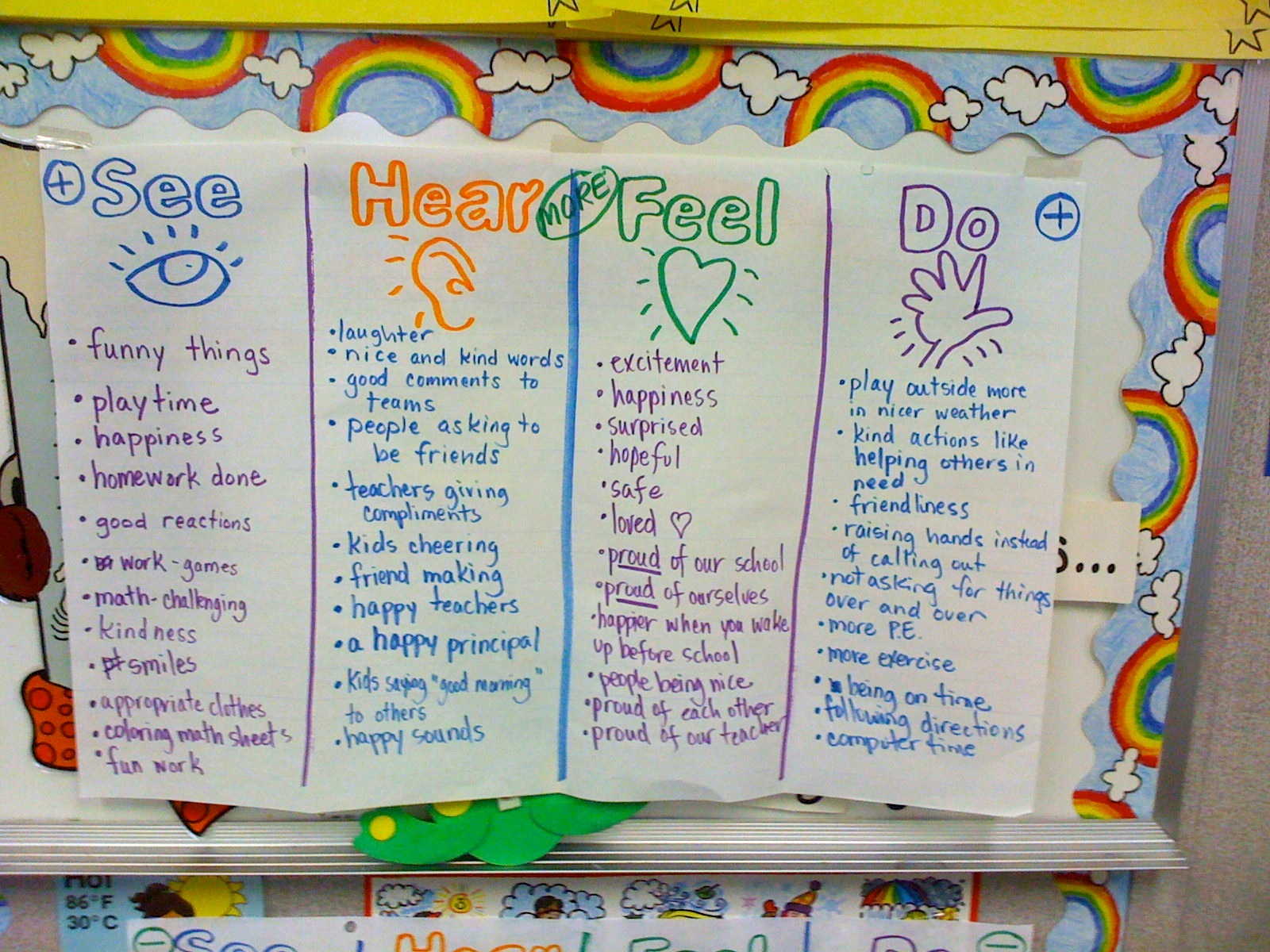PAX is a set of strategies to help students learn important self-management skills while collaborating to make their classroom a peaceful and productive learning environment. Centered on the Good Behavior Game, PAX is not a classroom management program, but it makes managing classrooms much easier. The PAX Good Behavior Game (GBG) contains the combined science from the youth violence prevention program called PeaceBuilders, the good behavior game, and other studies.

The Wonderful Classroom
With adult facilitation, students create a word-map of what they would see, hear, do, and feel more of and less of in a wonderful classroom. The map is posted in the classroom, and is revised over time to keep it fresh and applicable. The things that would happen more often in their wonderful classroom are called PAX (Peace, Productivity, Health and Happiness). The things that would happen less often are called spleems. Children quickly become able to discriminate automatically between PAX behaviors and spleems, an ability that is vital for learning sustainable self-regulation.
In a PAX classroom, teachers and other adults learn to set students up for success in creating PAX, and not to foster spleems either intentionally or unintentionally. Adults learn to note spleems unemotionally--not to nag, scold, or lecture about spleems--in order to prevent negative, attention-seeking behavior.
The Good Behavior Game
The PAX Good Behavior Game might occur during math or reading, during transitions, or in the cafeteria — any activity likely to challenge the students’ ability to stay focused and positive. Teachers ask students to predict what the PAX and spleems might be for the upcoming activity. The class is divided into three to five teams, and for the duration of the game, the teacher announces and records each team’s spleems on a chart (without mentioning any individual student’s name). The teacher also points out PAX behaviors. At the end of the game time, every team that has three or fewer spleems is rewarded with a “prize” activity such as a minute of dancing around or a 10-second giggle fest.
PAX Games are brief at first — a minute or two — then increase in length as students consistently “win” 12 out of 15 games each week (equivalent to 85% of the time). Eventually, first graders will be able to play the Good Behavior Game for 30 to 45 minutes, greatly increasing their fully engaged learning time. Older children can learn to play for even longer. The active, fun, intrinsic reward activities teach children two related skills: how to self-regulate under conditions of excitement and how to self-regulate when one doesn’t “win” or achieve a desired goal immediately. These are lifetime skills, involving different neural circuits than paying attention to learning.
Other PAX Elements
Both during the Good Behavior Game and outside of game time, a PAX classroom teacher uses many evidence-based behavioral kernels. These are simple practices that reduce transition time and support students in behaving appropriately and positively.
As both classroom adults and students become adept at PAX, students develop an extraordinary ability to turn on their attention voluntarily, to go up and down in excitement with grace; to handle distractions and disappointments well; to cooperate for common goals with other people of differing abilities and skills; and to notice and savor the daily joys of the environment they have created.